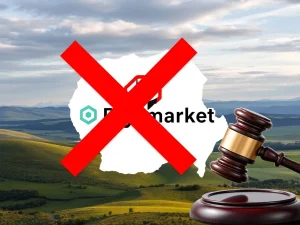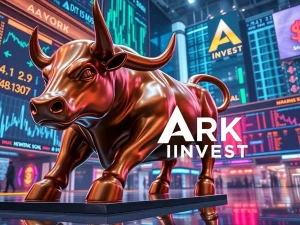Crypto’s Promise: Why Freedom Cities Attract the Blockchain Community

Are you part of the crypto community, constantly seeking new frontiers for development and less restrictive environments? Then you’ve likely heard whispers about ‘freedom cities.’ But why exactly are these proposed new communities capturing the attention of crypto enthusiasts? Let’s dive into the concept and the potential they hold for the crypto sector.
What Are Freedom Cities and Why the Crypto Connection?
The idea of ‘freedom cities’ gained recent prominence through political proposals, though they are essentially a modern rebranding of ‘charter cities,’ a concept dating back centuries. The core idea is to build new communities, often on underutilized land, designed with streamlined governance and reduced bureaucratic hurdles. The goal is frequently framed as addressing issues like housing shortages by cutting through ‘red tape,’ including lengthy environmental reviews.
The link to crypto and the broader tech community is significant. Many early backers of blockchain technology and cryptocurrencies, including prominent figures from Silicon Valley, have also shown support for the concept of building new cities with different rules. They see existing institutional structures as potentially hindering progress.
Less Regulation, More Innovation?
One major appeal of freedom cities for the blockchain community lies in the promise of a different regulatory environment. Proponents argue that these new cities could offer a ‘regulatory sandbox’ – a concept already adopted by various states – allowing for experimentation with new technologies and business models without being immediately stifled by existing, potentially outdated, rules.
As one expert put it, the crypto community sees in freedom cities the possibility of a regulatory regime that is not ‘overtly hostile to fintech innovation‘ and might even welcome it. This potential for reduced regulation could theoretically allow the crypto sector to ‘discover where it can go in terms of innovation and new applications’ more freely than within established jurisdictions.
The Challenges and Criticisms
However, the concept isn’t without its critics. Concerns have been raised that creating areas with suspended laws could lead to places ‘outside of the law,’ potentially reminiscent of historical ‘company towns’ where a single entity held significant sway, sometimes using its own currency (like company scrip in the past, or potentially crypto today, as some reports suggest). The history of charter cities is described as ‘checkered at best.’
Critics argue that circumventing established laws, such as environmental protections, could have negative consequences. The devil, as always, is in the details of how these cities would be designed and governed. While proponents emphasize that the goal is not lawlessness but finding ‘new and better ways to guide investment, construction and business,’ the potential for regimes highly favorable to corporate interests or specific industries like crypto remains a point of debate.
Real-World Examples: California Forever and Próspera
Looking at recent attempts to build new communities provides insight into the challenges. The California Forever project, backed by Silicon Valley investors, aimed to build a new city north of San Francisco. Despite significant investment, it faced substantial ‘cultural and regulatory barriers,’ including local opposition and environmental study delays, illustrating the difficulty of building from scratch in the US.
In contrast, Próspera in Honduras, a chartered-city project, initially found a more welcoming environment, allowing it to establish its own governance and regulatory structure. It has attracted investment, including from crypto-aligned figures, and openly promotes itself as Bitcoin-friendly, even hosting crypto events. However, even Próspera has faced significant challenges, including legal disputes with the Honduran government, showing that developing such projects is complex, even in seemingly favorable conditions.
Why the Ongoing Interest from the Crypto Community?
The continued interest from the crypto community in freedom cities and similar projects seems driven by a few key factors:
- **Decentralization Alignment:** The desire for alternative governance structures resonates with the decentralized ethos often found in crypto.
- **Innovation Hubs:** The potential to create environments specifically designed to foster technological and financial innovation is highly appealing.
- **Regulatory Clarity/Freedom:** Seeking jurisdictions with clearer, more favorable, or less burdensome regulation for crypto and blockchain applications.
- **Building New Systems:** A passion for building new systems from the ground up, rather than working within existing, perceived as rigid, frameworks.
While the concept of freedom cities remains somewhat vague and faces significant hurdles, the administration’s tentative steps towards using federal land for housing suggest the idea isn’t entirely off the table. For the crypto community, these potential new cities represent a fascinating laboratory where the bold ideas of the space might one day find fertile ground to grow, free from some of the constraints of traditional jurisdictions.
Conclusion: A Bold Promise, Many Questions
Freedom cities offer a compelling vision for some: a chance to build anew, potentially free from the regulatory burdens that can slow progress. For the crypto and blockchain community, this vision aligns with a desire for innovation and alternative governance. However, significant questions remain about their practical implementation, potential downsides, and whether they can truly deliver on the promise of a better environment for innovation without creating new problems. The path forward for freedom cities, and their relationship with the crypto world, is still being written.









